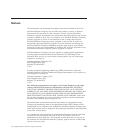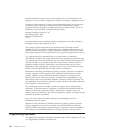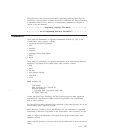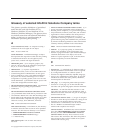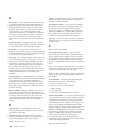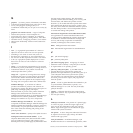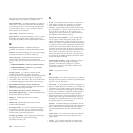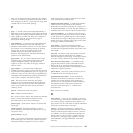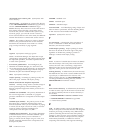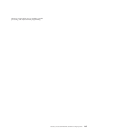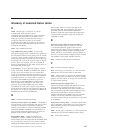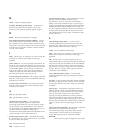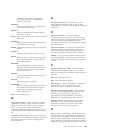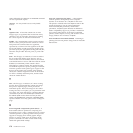their own environment and are often used as electronic
forms. (2) A collection of predefined static data, such as
lines, shading, text, boxes, or logos that can merge with
variable data on a sheet while printing.
P
page. (1) In AFP, a data stream object delimited by a
Begin Page structured field and an End Page structured
field. A page can contain presentation data such as text,
image, graphics, and bar code data. (2) A collection of
data that can print on a physical sheet of paper.
Synonymous with logical page.
page definition. (1) An AFP resource that defines the
rules for transforming line data and XML data into
MO:DCA-P data and text controls. (2) An AFP resource
that contains a set of formatting controls for printing
logical pages of data. It includes controls for the
number of lines per sheet, font selection, print
direction, and mappings for individual data fields to
positions on the printed sheet.
page printer. Any of a class of printers that accepts
composed pages, constructed of composed text and
images, among other things, and that prints any
sequence of pels in any order on the page. Contrast
with line printer.
page segment. (1) An AFP resource object that
contains text, image, graphics, or bar code data that can
be positioned on any addressable point on a page or an
electronic overlay. (2) An AFP resource prepared before
formatting and included during printing. Synonymous
with segment. Compare with electronic overlay.
path. The route used to locate files; the storage
location of a file. A fully qualified path lists the drive
identifier, if any, the directory name, the subdirectory
name, if any, and the file name with its associated
extension, if any.
pattern. Synonymous with raster pattern.
PDF. Portable Document Format.
pel. Short for picture element. The smallest area that the
printer can tone individually. Synonymous with
addressable point or dot in Xerox terminology.
physical page. Synonymous with form. Contrast with
logical page.
physical printer. In InfoPrint Manager, a type of
actual destination that represents a printer device. See
also printer device.
picture element. See pel.
point. (1) A unit of measurement whose main purpose
is to describe type sizes. Each pica contains 12 points,
with approximately 72 points to an inch. (2) In the
Didot point system, a point is 0.0148 of an inch. Each
cicero contains twelve Didot points.
Portable Document Format. A standard specified by
Adobe Systems, Incorporated, for the electronic
distribution of documents. PDF files are compact; can
be distributed globally via e-mail, the Web, intranets, or
CD-ROM; and can be viewed with the Acrobat Reader.
portrait orientation. (1) In printers, text and images
that are printed parallel to the shorter side of the form.
(2) The position of a printed page on a sheet of paper,
so that the shorter edges of the paper are the top and
bottom of the page, and the longer edges are the sides
of the page. Contrast with landscape.
print fidelity. A function of InfoPrint XT that
measures the length of a Xerox print line and makes
sure that the corresponding AFP line it generates is the
same length.
print job. The data to print, with specific conversion
parameters and print options that you submit to
InfoPrint Manager for processing. A print job is similar
to a report, which is the Xerox term used for the job.
Print Services Facility (PSF). (1) An IBM licensed
program that produces printer commands from the
data sent to it. (2) A program that manages and
controls the input data stream and output data stream
required by supported printers.
printer device. The actual printer hardware, such as
an InfoPrint 4100. See also physical printer.
proportionally-spaced font. A font in which the
characters are contained in character cells that vary
with the size of each character. Fonts of this type
provide for even spacing between printed characters,
and eliminate excess white space around narrow
characters, such as the letter “i”. Contrast with
monospaced font.
PSF. Print Services Facility.
R
raster pattern. A series of pels arranged in scan lines
to form an image. The toned or untoned status of each
pel creates an image. A digitized raster pattern is an
array of bits. The on or off status of each bit determines
the toned or untoned status of each pel.
resource. In the AFP architecture, a collection of
printing instructions and sometimes data that consists
entirely of AFP structured fields. You store a resource
as a member of a library, and InfoPrint Manager can
call the resource when it needs it. Coded fonts, font
character sets, code pages, page segments, overlays,
form definitions, and page definitions are all AFP
resources.
Glossary of selected InfoPrint Solutions Company terms 163
|
|
|
|
|
|
|
|
|
|
|
|
|
|
|
|
|
|
|
|
|
|
|



